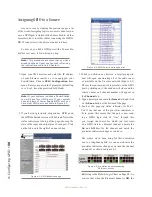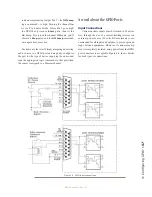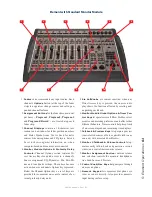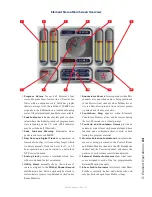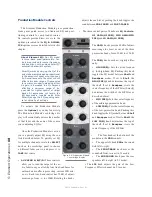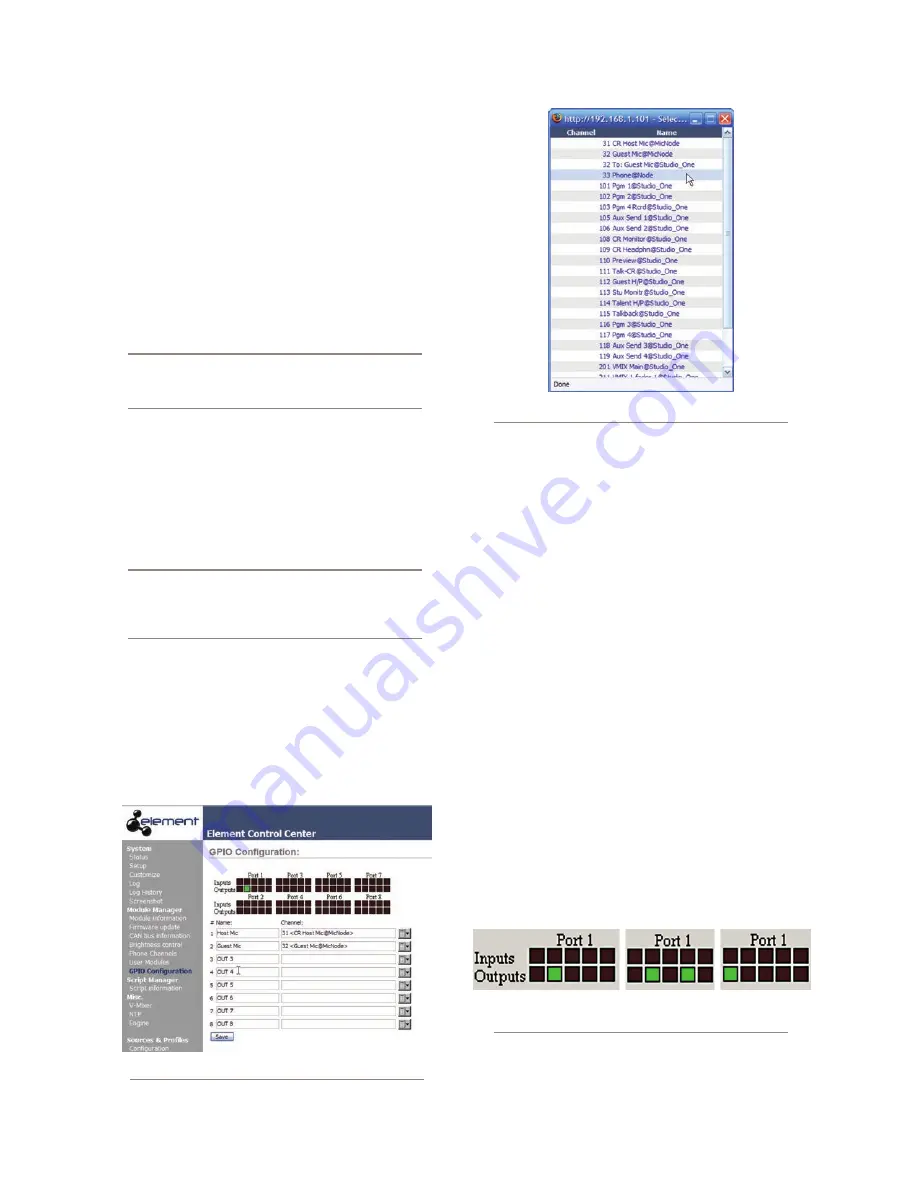
4: C
on
fig
uri
ng G
PI
O •
56
©2016 Axia Audio- Rev 1.8.1
Assigning GPIO to a Source
As you’ve seen by studying the previous pages, a lot
of the work of assigning logic to a source is done for you;
once a GPIO port is linked with a Source Profile, all that
remains to do is to solder cables connecting the GPIO’s
DB-15 connectors to the device’s control interface.
So, how do you link a GPIO port with a Source Pro-
file? It’s very easy; let’s do it step-by-step.
Note: This procedure assumes that you have
already defined at least one Source Profile using
the instructions outlined in Chapter 3.
1. Open your Web browser and enter the IP address
of your Element console or, if so equipped, your
PowerStation. Choose
GPIO Configuration
from
menu. Enter your password if prompted (default log-
in is “user”, leave the password field blank).
Note: If your systems includes a PowerStation,
you will have four GPIO ports. If your system
uses an Element Power Supply/GPIO unit, you
have eight GPIO ports as shown in Figure 4-1.
2. If you haven’t previously assigned any GPIO ports,
the GPIO definitions screen will be blank. Notice the
status indicators at the top of the page, showing the
state of the input and output pins of each port. Click
on the list icon to the right of an unused line.
3. When you click on any list icon, a small popup win-
dow will open, enumerating all of the audio sourc-
es available on the Livewire network (Figure 4-2).
Choose the source you wish to associate with a GPIO
port by clicking on it; the window will close and the
source’s name and channel number will appear in
the
Channel
box.
4. Type a descriptive name in the
Name
field, and click
on the
Save
button at the bottom of the page.
5. Look at the page-top status indicator for Port 1.
You’ll see that one of the pin status indicators is
lit in green; this means that the port is now send-
ing a GPIO logic state of “true” through this
pin. Assign the source for which you just creat-
ed a GPIO link to a Element channel; operate the
On
and
Off
keys for the channel and watch the
pin status indicators change as you do so.
The source we’ve been using for this demonstra-
tion is a telephone hybrid; we can now observe the
pin status indicators change as we turn the channel
on and off, as shown in Figure 4-3.
Referring to the Hybrid Logic Chart on Page 48, we
can see that when the Element channel is
Off
, the
Figure 4-1: GPIO definitions page
Figure 4-2: GPIO Select Source popup list
Figure 4-3: Pin status indicators showing
GPIO port activity















